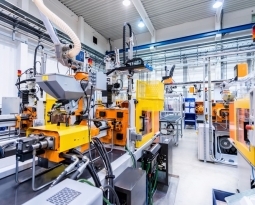Nebraska’s New Power Plant to Reduce CO2 Emissions
Over half of the electricity in Nebraska is produced by coal-fired plants. However, two-thirds of the electricity generated by Monolith Materials’ proposed $50 million manufacturing headquarters will be from carbon-free sources such as nuclear, hydro and wind. The Lincoln plant is expected to be in operation by 2020 or 2021. It is expected to bring 200 jobs to the plant and potentially 600 spinoff jobs.
Monolith Materials have developed a way to produce carbon black using natural gas rather than crude oil or coal tar, which reduces emissions by around 90% and produces clean-burning hydrogen in the process.
This hydrogen by-product will be used at the Sheldon Station plant, which will be the first large-scale power plant in the US to produce electricity using this method. Monolith Materials have partnered with the Nebraska Public Power District (NPPD) and have decided to reduce emissions by replacing a coal-fired boiler with a hydrogen-fired boiler. Although the hydrogen is not considered renewable energy, as it is derived from natural gas, it is estimated that it will cut Nebraska’s CO2 emissions by around a million tons per year.
The Silicon Valley start-up chose Nebraska as the best location for the plant because of its cheap electric rates, public power partnerships, infrastructure and skilled workforce. NPPD’s Generation Strategy Manager wants to replace more coal with natural gas and make Nebraska “the carbon black capitol of the world.”
Over the past five years, Nebraska has grown by over 52,000 manufacturing jobs. Chief Commercial Officer, Rob Hanson described the company as, “a California company with a development division in Nebraska,” but that “In two years, we’ll be a Nebraska company with R&D in California.”
Energy companies like Monolith Materials are continually finding cleaner ways to produce electricity. Please contact one of Swanson Reed’s offices to find out whether your company is eligible for the federal or state R&D tax credit.

















